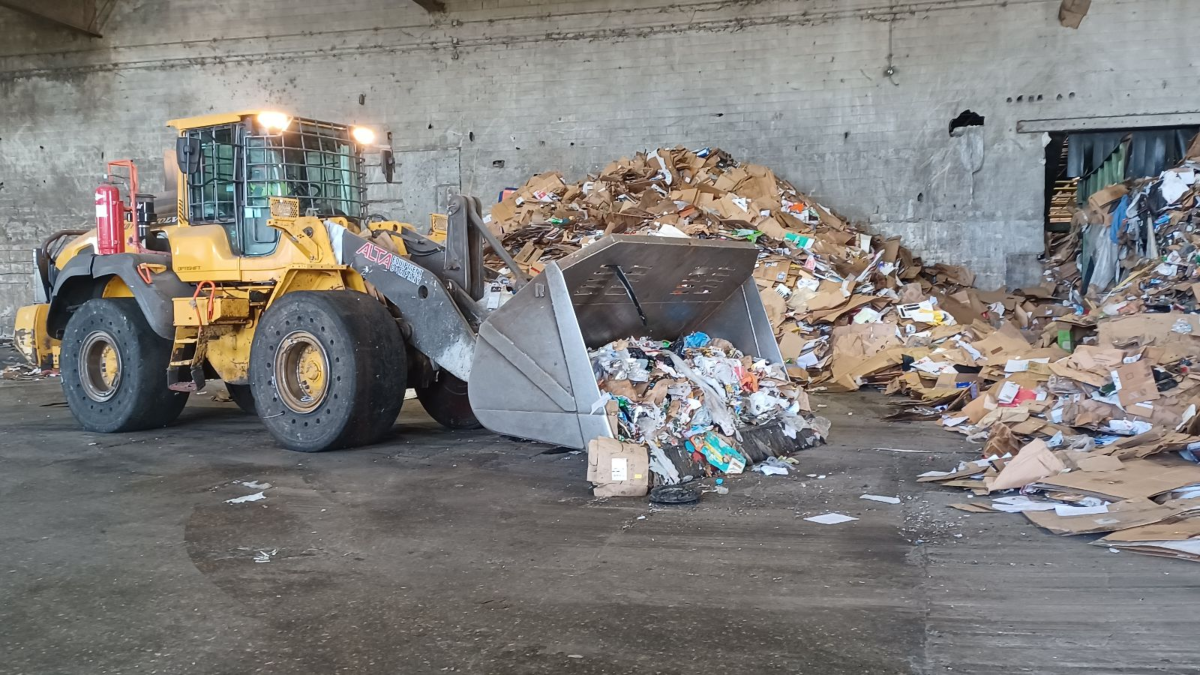
Photo by Joshua Ceballos

Audio By Carbonatix
At the Reuter Recycling Facility in Pembroke Pines, a large plant that smells vaguely of garbage, Waste Management gathers recyclable material from all over Miami-Dade, Broward, and Monroe counties.
Within what’s called the “tipping room,” recycling trucks that pick up the contents of residents’ blue bins from all across South Florida dump several metric tons onto the ground to be sorted by machines and staff, and ultimately packed into tight, thousand-pound bales that will be sold to materials companies across the continent. (Though other countries purchase recyclables from the U.S., Waste Management, the largest waste-disposal company in the nation, came to an agreement with Greenpeace USA to sell its plastic inside North America and nowhere else.)
Nonetheless, according to the most recent data from the Florida Department of Environmental Protection, Miami-Dade’s recycling rate has taken a nosedive, plummeting from 46 percent in 2012 to 19 percent today. It turns out much of the material brought in isn’t recycled because residents aren’t following guidelines that cover what can be recycled or they’re contaminating their recyclables with food waste, which can render an entire bin unusable.
That being said, Waste Management community outreach representative Shiraz Kashar tells New Times that much of what comes in does get processed – eventually. During a recent tour of the facility, Kashir and others at Waste Management shared six recycling lessons with New Times that are likely surprise even the most green-minded garbage tosser.
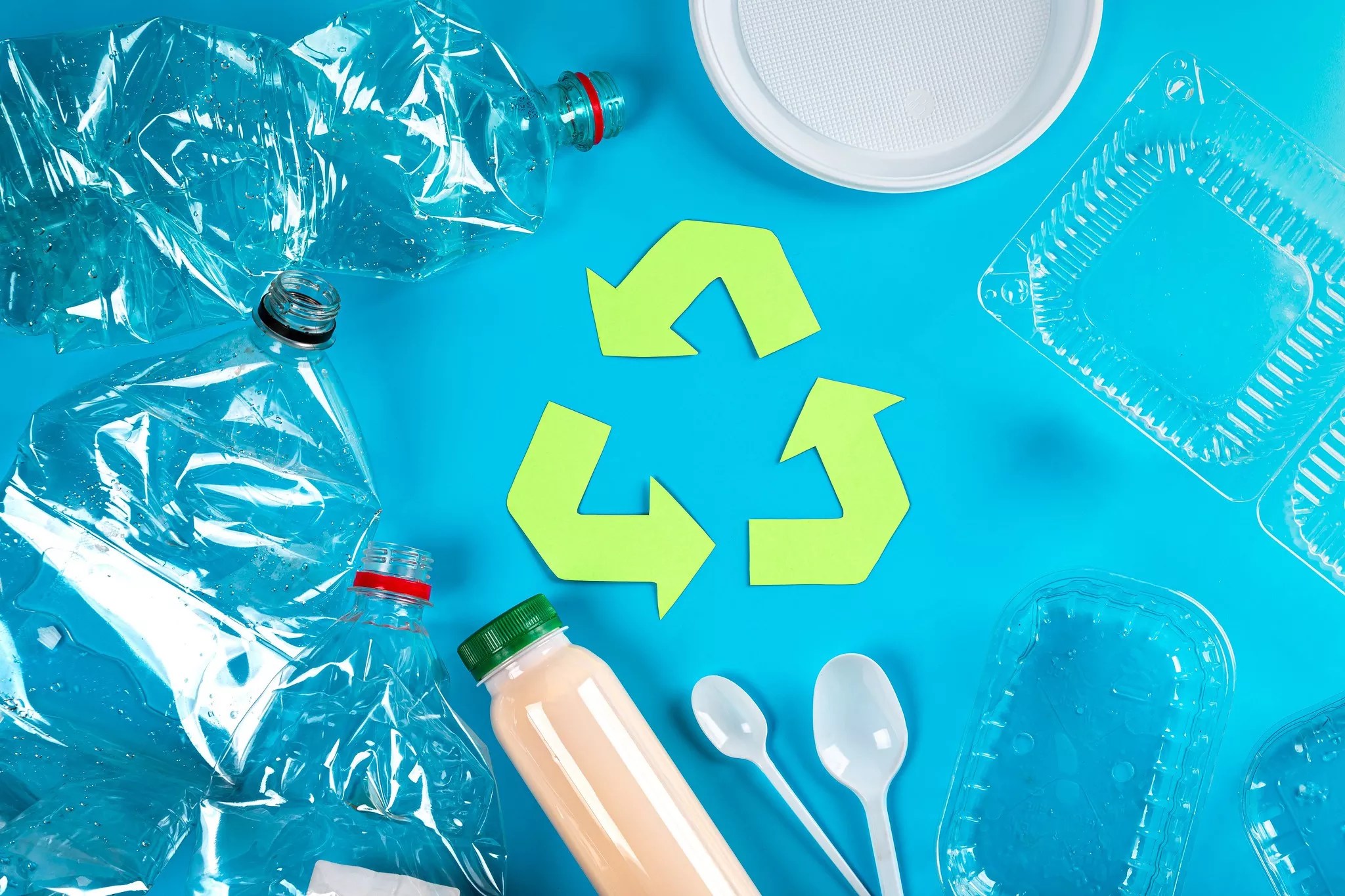
Pay attention to the number in the middle of the symbol.
Photo by Marco Verch Professional/Flickr
The Recycling Symbol Does Not Mean Something Can Be Recycled
Everyone recognizes the ubiquitous three arrow symbol that has been used in marketing campaigns and branding to denote that something is recyclable or made with recycled material. But did you know that that’s not the actual meaning of the symbol?
“The arrows actually just let other engineers know what kind of material an item is made out of, but it started getting used for marketing purposes,” Kashir explains. “Just because something has the arrows doesn’t mean it’s recyclable.”
When you see the symbol on a plastic item, pay more attention to the number in the middle. If it has the number “1,” which usually appears on single-use plastic drink bottles, that means the item was made to be recycled.
The number “2” usually appears on higher-density plastics, such as milk jugs and detergent containers. These are also safe to recycle, but make sure to wash them before putting them in the bin.
The higher numbers, from “3” up, include PVC plastic, plastic bags, and Styrofoam. These items are generally not recyclable. If you’re unsure whether a specific plastic item can be recycled, check guide on Waste Management’s website.
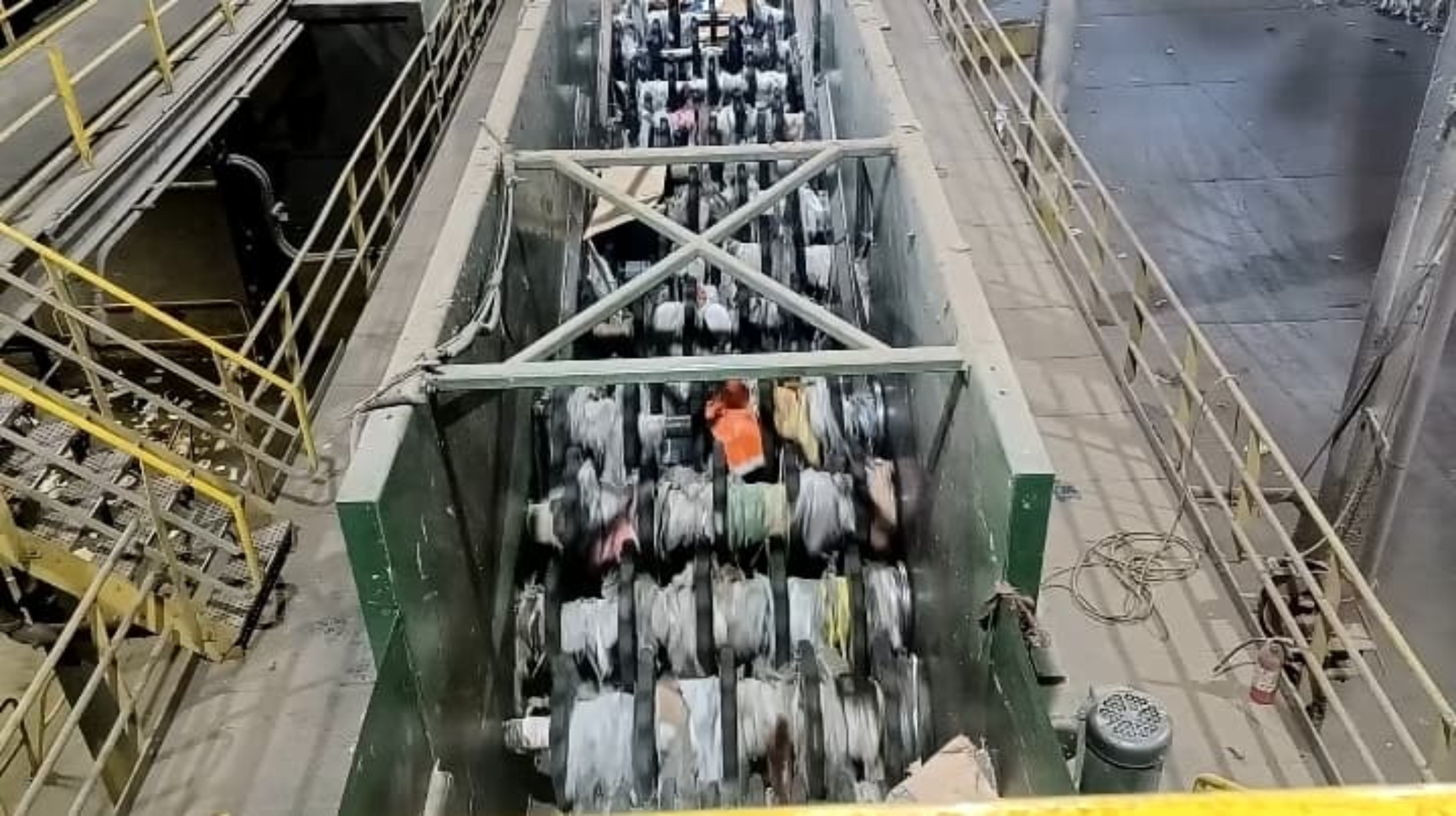
Plastic bags can’t be recycled and they clog sorting machines.
Photo by Joshua Ceballos
Plastic Bags Ruin the Recycling Process
All it takes is a few trips to the grocery store and suddenly you’ve got enough plastic bags to fill an entire kitchen cabinet. While some folks prefer to horde the bags to reuse later, others might assume they can be tossed into the blue bin. After all, they’re plastic.
Not only can plastic grocery bags not be recycled, but putting them in your recycling bin actually complicates recycling when it gets to the plant.
At Waste Management’s facility, a large machine with spinning blades is meant to move plastic items from one area to another and sort them according to weight. But when plastic bags are put through the machine, they get tangled in the spinning blades and clog the device like gum in a bicycle chain.
According to Luis Restrepo, a top supervisor at the Reuter Recycling Facility, staff has to shut down the sorting machine up to three times a day just to remove plastic bags to prevent the entire system from failing.
So if you’re looking to get rid of your grocery bags in a responsible way, you’re better off taking them back to the store where you got them and asking if they accept plastic bags – or simply reuse them.
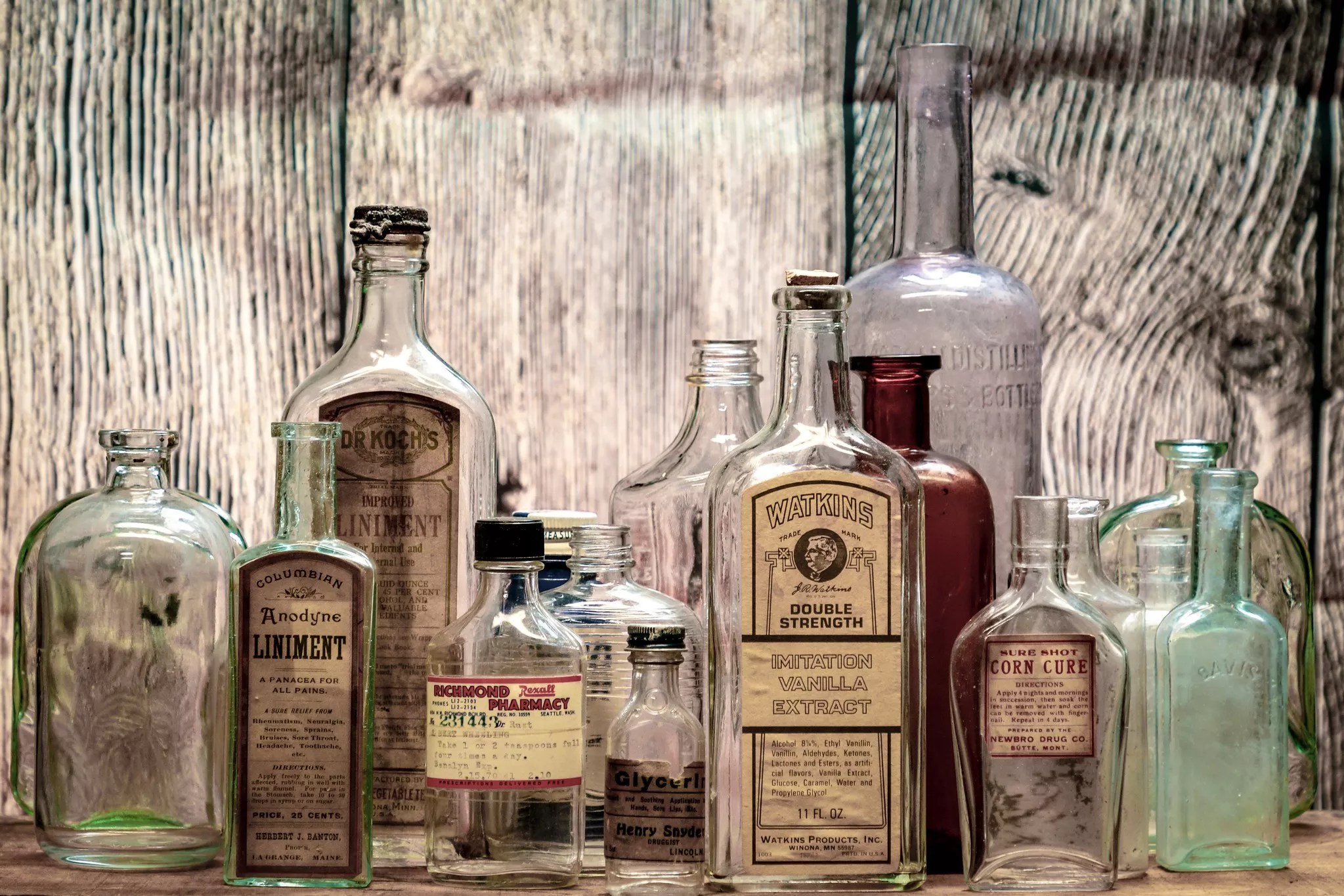
Recycling facilities only accept clear, green, and brown bottles
Photo by Cindy Shebly/Flickr
Glass Is Still Recyclable
When items get recycled, the recycling facility processes them in order to eventually sell them to other companies that use the items as material to make new items. Each material has a price as a commodity, and, naturally, some materials are more valuable than others.
Aluminum objects, for instance, are some of the most valuable materials because they’re easily recyclable into other aluminum products and because that metal is hard to procure.
Glass, on the other hand, is a much less valuable commodity and is not often brought back into the supply chain in the same form that it was recycled. Environmentalists recommend reusing glass receptacles rather than recycling them because they aren’t worth much to recycling companies.
However, Kashir says, Waste Management in South Florida does recycle glass to be sold – but not as bottles.
“Glass is tricky. Not many plants accept recycled glass because it has a higher-than-usual cost due to waste contamination,” he explains. “We sell our glass to Strategic Materials Inc. in Sarasota.”
According to Kashir, the glass product Waste Management sells to Strategic Materials is used in sandblasting and as a cement additive. In some cases, glass additives are used to fill in potholes at landfills caused by the constant flow of trucks coming in and out to dump waste. So, in a way, glass does end up at a landfill – just not with the trash.
For those who plan to recycle glass, Kashir stresses that recycling facilities only accept clear, green, and brown bottles. (Blue glass bottles can’t be recycled owing to the presence of cobalt.)
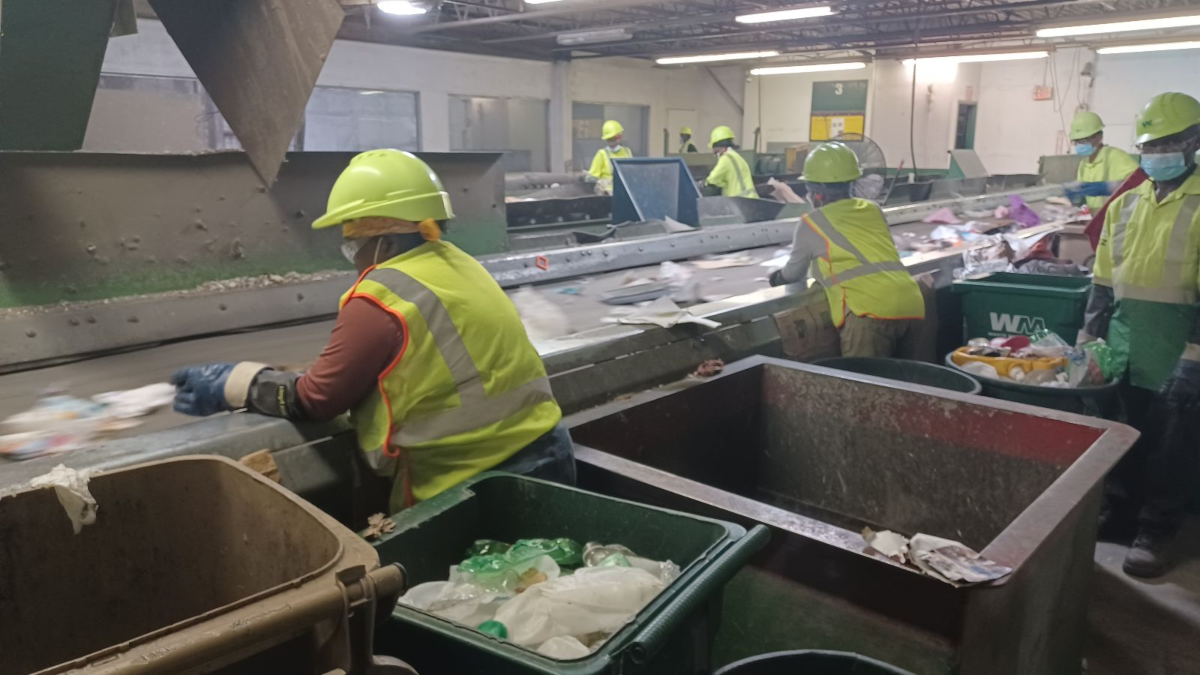
Workers sort through recyclable material on a conveyor belt, taking out contaminated or unusable items and prioritizing the more valuable materials.
Photo by Joshua Ceballos
Labor Shortages Are Affecting Recycling Plants
Not even the recycling business is immune to labor shortages post-pandemic, and the Reuter facility in Pembroke Pines is looking to fill vacant positions. Where a sorting room used to have a full staff to pick out contamination and unrecyclable material from an assembly line, now only a few workers are available to pick through the incoming waste. This forces staff to prioritize high-value recyclables on the assembly line.
“Labor issues have been a problem,” Restrepo, the head supervisor, tells New Times. “There’s so much contamination, we can’t keep up.”
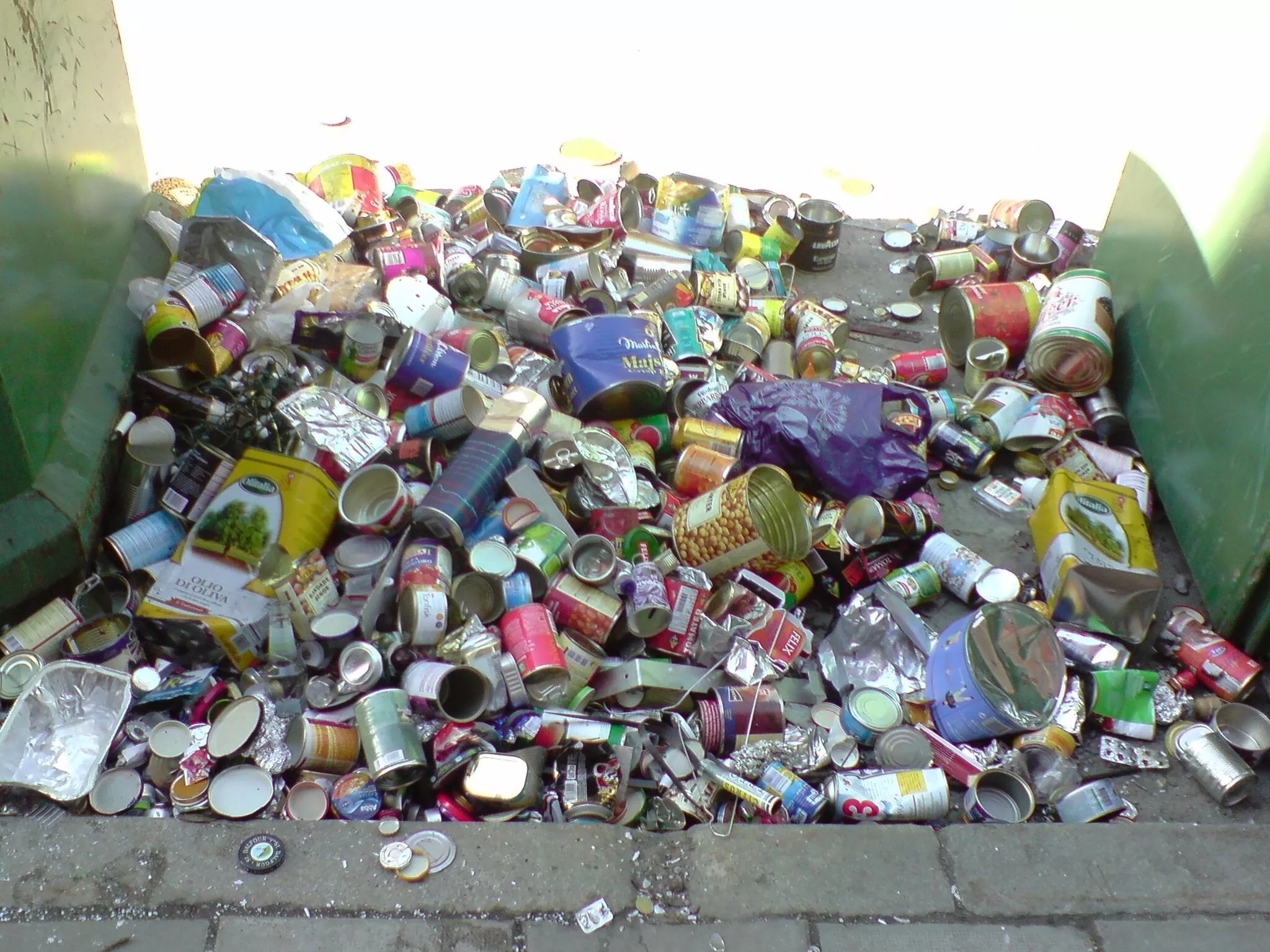
Out of a 15-ton load of material brought in, Restrepo estimates that up to nine tons can wind up being contaminated.
Photo by Olle Svensson/Flickr
Wishing Something Can Be Recycled Doesn’t Make It So
Speaking of contamination: Miami-Dade County’s rate is so bad – 49 percent of what Miami-Dade residents recycle is contaminated – that a consulting firm hired to examine the county’s recycling program recommended performing a new study because they’d rarely encountered such a horrendous statistic.
Out of a 15-ton load of material brought in, Restrepo estimates that up to nine tons wind up being contaminated.
Much of the contamination happens because of “wish cycling,” wherein people throw practically anything into the bin because they think it might be recyclable, without actually checking to see if it is.
In the “tipping room” at Reuter, a truckload from Hialeah contained myriad objects that were in no way useful aside from eliciting a few chuckles, including a plastic Santa Claus, a cooking pot, a huge container of antifreeze, and a pair of coconuts.
In order to reduce contamination in your own home, the best course of action is to look up what materials can actually be recycled within your municipality and perhaps print out a visual guide as a household reminder. If you’re unsure about something, look it up, and if you can’t find it, throw it in the trash rather than put it with the recycling and spoil the bunch.
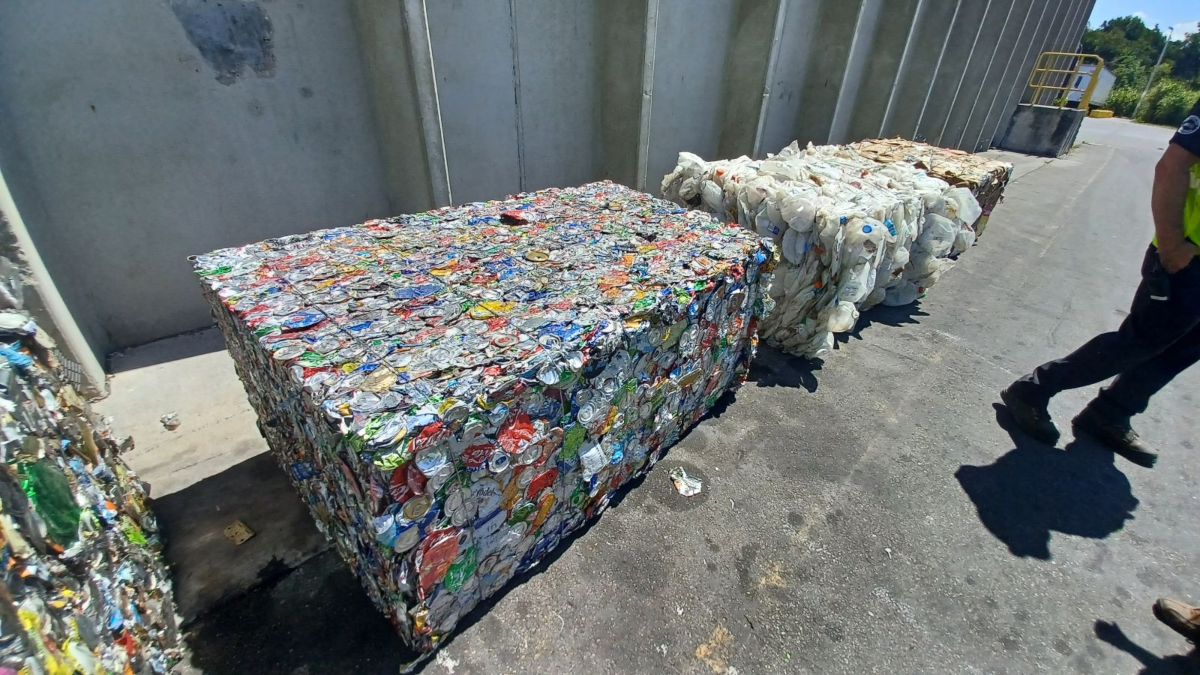
Bales of recyclables are separated by material: paper, cardboard, plastic, and aluminum. One bale can weigh over 1,000 pounds.
Photo by Joshua Ceballos
Wash (or At Least Rinse) Recyclables Before Putting Them in the Bin
Tossing food containers in the recycling bin without washing them spoils the good material that otherwise might have been recycled. When there are fewer workers to sort through all the contaminated material, unwashed items make it harder for the limited staff to salvage in order to lower the county’s rising contamination rate.